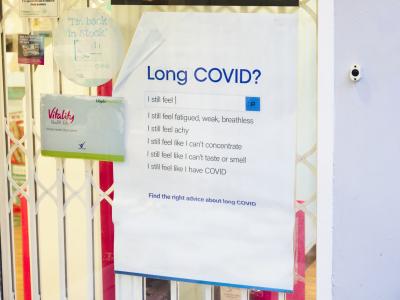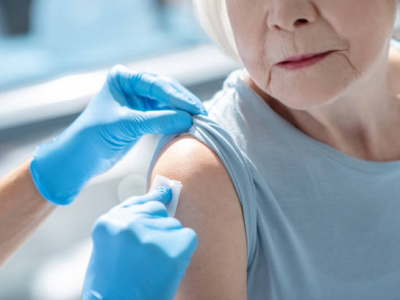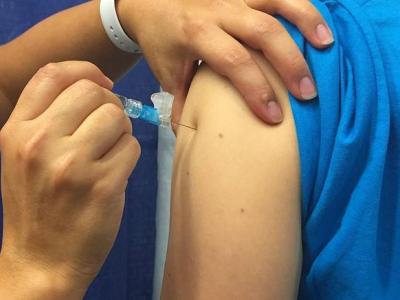Our weekly wrap-up of antimicrobial stewardship & antimicrobial resistance scans
High rate of antimicrobial resistance found in Vietnam ICU patients
A study of intensive care unit (ICU) patients in Ho Chi Minh City, Vietnam, showed high rates of antimicrobial-resistant bacterial infections, according to a report yesterday in BMC Infectious Diseases.
The study group consisted of 220 patients who were admitted to a major tertiary hospital's ICU between November 2014 and September 2015. The authors cultured bronchoalveolar fluid samples and tested the identified microbes for antibiotic susceptibility.
They found that 93% of patients had resistant bacteria, and in 87% of patients the pathogens were resistant to at least two drugs.
Among patients with ventilator–associated pneumonia, Acinetobacter emerged as the leading causative agent, accounting for 42% of 177 microorganisms isolated, followed by Klebsiella species (22%) and Pseudomonas aeruginosa (16%). More than 90% of Acinetobacter isolates were resistant to nine antibiotics, and the Klebsiella and P aeruginosa isolates also showed high rates of multidrug resistance.
Mortality among patients with resistant pathogens was higher than in those without—67% versus 45%—but the difference was not statistically significant.
The authors said their study is the first to examine antimicrobial resistance among hospital patients in Vietnam. They concluded, "The finding here reinforces the view that multidrug resistance is a global public health issue, and emphasizes the need to study combined therapies and rational treatment strategies."
Jun 15 BMC Infect Dis report
Antimicrobial resistance tops 95% among ICU patients in Nepal
More than 95% of gram-negative bacteria isolated from patients with healthcare-associated infections (HAIs) in an ICU in Nepal showed resistance to more than one antimicrobial, says a report published yesterday in Antimicrobial Resistance and Infection Control.
The study involved patients treated in the ICU of Tribhuvan University Teaching Hospital in Kathmandu from January 2014 through March 2015. The authors took clinical specimens from patients who had suspected HAIs, cultured them, and tested bacterial isolates for antimicrobial susceptibility.
The report says 135 of 491 patients were thought to have HAIs, and 149 samples from these patients yielded bacterial growth. Hospital-acquired pneumonia was the leading type of HAI (53%), followed by bloodstream infections, surgical site infections, and urinary tract infections. Acinetobacter species, Klebsiella species, Escherichia coli, and Burkholderia cepacia were the leading pathogens.
The rate of resistance among gram-negative isolates was an "extremely high" 95.8%, the authors wrote. Many of the isolates were producers of beta-lactamases (enzymes that neutralize antibiotics).
"Nearly 96% of the Gram negative bacterial isolates causing nosocomial infections were found multidrug resistant, which is [the] highest ever rate of [multidrug-resistant] bacteria reported from our country," the report says. Further, "a significant proportion (43.3%) of our isolates was extensively drug resistant (XDR)."
Noting that gram-negative pathogens are a major cause of HAIs, the authors called the high level of resistance alarming. "Continuous surveillance and establishment of preventive and control measures of healthcare associated infections are urgently needed in our setting," they concluded.
Jun 15 Antimicrob Resist Infect Control report
Study finds 5% CRE rate in DC-area healthcare facilities
Originally published by CIDRAP News Jun 15
A study today in Infection Control and Hospital Epidemiology found a 5.2% rate of the highly antibiotic-resistant bacteria known as carbapenem-resistant Enterobacteriaceae (CRE) in Washington, DC–area acute-care hospitals (ACHs) and long-term care facilities (LTCFs), establishing a baseline figure for the city.
This study included 16 facilities in the district: all 8 ACHs, 5 of 19 skilled nursing facilities, both of the city's long-term acute-care facilities, and the sole inpatient rehabilitation facility. Of 1,022 perianal swabs tested, 53 were positive for CRE, for an overall prevalence of 5.2%. The rate varied from 5.0% in ACHs to 7.0% in LTCFs. The inpatient rehab center had no CRE-positive patients.
The median prevalence rate by facility was 2.7%, with one center having a 29.4% rate. Male patients demonstrated a significantly higher prevalence (7.1%) compared with females (3.7%). Patients aged 20 to 39 years had the highest prevalence of any age-group, at 8.0%.
Of the positive samples, 18 (34.0%) were genetically similarity to at least 1 other sample, possible evidence of CRE spread within and between facilities.
"CRE is a significant clinical and public health concern, with a potential for widespread and rapid transmission within and between facilities," said lead author Roberta DeBiasi, MD, MS, in a press release from the Society for Healthcare Epidemiology of America (SHEA), publisher of the journal. "Our study demonstrates the strength of a collaborative approach within a city or region to determine the prevalence of multi-drug resistant organisms in healthcare facilities."
Jun 15 Infect Control Hosp Epidemiol study
Jun 15 SHEA news release
Egyptian study finds high rates of resistance in community-onset GI cases
Originally published by CIDRAP News Jun 14
A single-center study in Egypt found that nearly two thirds of the Enterobacteriaceae isolates collected from the feces of patients who had community-onset gastrointestinal complaints were extended-spectrum beta-lactamase (ESBL) producers, and 4.4% were carbapenemase-producing Enterobacteriaceae (CPE).
Writing in Antimicrobial Resistance & Infection Control, the authors said they recovered 113 Enterobacteriaceae isolates from 100 consecutive patients at El-Ahrar General Hospital in Zagazig in early 2013. The most common pathogens detected were Escherichia coli (72 of 113), Klebsiella pneumoniae (23), and Enterobacter cloacae (3). Seventy-three isolates (64.6%) were ESBL Enterobacteriaceae.
Of the 100 patients, 68 harbored ESBL Enterobacteriaceae, while 5 tested positive for CPE. Twenty-two (47.8%) of the ESBL-positive isolates were multidrug resistant. Three of the 5 CPE isolates harbored New Delhi metallo-beta-lactamase (NDM), a known resistance gene.
The researchers conclude, "These high colonization rates are worrying, therefore prudent antimicrobial use should be adopted in Egyptian community settings."
Jun 13 J Antimicrob Resist Infect Control study
Egyptian data show high MDR rate in neonatal sepsis
Originally published by CIDRAP News Jun 14
Another Egyptian study published yesterday in the same journal detailed a 38% rate of multidrug-resistant (MDR) bacteria in pathogens isolated from infants who had sepsis.
Of 953 neonates admitted to the neonatal intensive care unit of Cairo University Children's Hospital in a 12-month period, 314 were diagnosed as having sepsis: 123 with early-onset sepsis and 191 with late onset.
The investigators assessed antimicrobial sensitivity and resistance patterns for all 245 isolated bacteria isolated from the patient, with 166 from blood cultures and 79 endotracheal aspirate cultures. Of those 245 bacteria, 92 (37.6%) were MDR. And gram-negative bacteria accounted for 78 of those MDR pathogens, or 84.8%, and the rest were gram-positive.
Of the 314 patients, 67 (21.3%) harbored MDR bacteria. The rate was lower in the early-onset group (18/123, or 14.6%) than the late-onset group (49/191, or 25.7%).
Gram-negative bacteria were most resistant to ampicillins (100%), cephalosporins (93%-100%), and piperacillin-tazobactam (99%), with less resistance to aminoglycosides (36%-52%).
Jun 13 J Antimicrob Resist Infect Control study
Study: Antibiotic treatment poses 20% risk of adverse events in inpatients
Originally published by CIDRAP News Jun 13
Hospital patients who receive antibiotic treatment may face about a 20% risk of a related adverse event, if the results of a new study from Johns Hopkins University researchers can be generalized.
The authors checked the medical records of 1,488 Johns Hopkins Hospital patients for information about adverse drug events (ADEs) after they received at least 24 hours of parenteral or oral antibiotic treatment, according to their report yesterday in JAMA Internal Medicine.
The investigators looked for gastrointestinal, dermatologic, musculoskeletal, hematologic, hepatobiliary, renal, cardiac, and neurologic ADEs recorded within 30 days after treatment, and for Clostridium difficile or multidrug-resistant infections that occurred within 90 days. The patients had a median age of 59 years, and 51% of them were women.
The team determined that 298 (20%) of the patients had at least one ADE. Fifty-six ADEs, including 7 C difficile infections, were in patients who had received antibiotic treatment that was considered not clinically indicated. The researchers also concluded that every additional 10 days of antibiotic treatment conferred a 3% increase in risk of an ADE.
"The most common ADEs were gastrointestinal, renal, and hematologic abnormalities, accounting for 78 (42%), 45 (24%), and 28 (15%) 30-day ADEs, respectively. Notable differences were identified between the incidence of ADEs associated with specific antibiotics," the report states.
The authors concluded that their findings "underscore the importance of judicious antibiotic prescribing to reduce the harm that can result from antibiotic-associated ADEs."
Jun 12 JAMA Intern Med abstract
Structured allergy history tied to better preoperative antibiotics
Originally published by CIDRAP News Jun 13
A stewardship program that involved a structured allergy history performed by a pharmacist was associated with good results in patients who had beta-lactam allergies and underwent elective surgery at a Toronto hospital, according to a study in the Journal of Antimicrobial Chemotherapy.
The use of alternative second-line antibiotics has been associated with adverse events in patients reporting beta-lactam allergies. The study authors hypothesized that structured allergy histories, without the use of skin testing, could reduce the use of alternative prophylactic antibiotics.
They analyzed data on 485 patients whose allergy histories were detailed by a pharmacist and reviewed by an infectious disease physician. Patients were prescribed cefazolin prophylaxis if they did not describe a history of a type 1–mediated (severe) reaction. Among the total, 117 (24.1%) reported a type 1–mediated allergy history.
Of the 485 patients, 267 (55.1%) were chosen to receive cefazolin before surgery. The researchers reported no increase in serious complications. After the program was implemented, the overall rate of prophylaxis with alternative antibiotics fell from 81.9% to 55.9%.
Jun 10 J Antimicrob Chemother study














